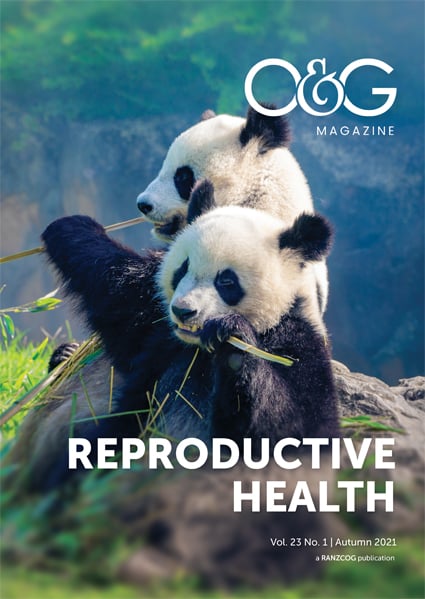Since the birth of the first IVF baby in 1978, the process of IVF has advanced in scope, sophistication and success rates. Australia and New Zealand undertake approximately 85,000 treatment cycles each year, representing one of the highest utilisation rates in the world.1 Even with the many significant advances in IVF technology and innovations, live birth rates for IVF have plateaued at approximately 17% per cycle started.2 Despite our best efforts, most of the time IVF fails. IVF add-ons have emerged as optional extras which usually aim to increase the chance of IVF success.
IVF add-ons
There is no consensus definition of an IVF ‘add-on’. They are a heterogeneous group of treatment options, including procedures, medicines and techniques that are generally considered additional to standard IVF. Examples include ‘injury’ of the endometrium in the cycle prior to an embryo transfer (endometrial scratching), selection of sperm for injection under ultra-high magnification (intracytoplasmic morphologically selected sperm injection, [IMSI]) or treatments to suppress immune cell activity in the endometrium (e.g. intralipid infusion). The use of IVF add-ons is widespread. Recent research reports that as many as 21 different IVF add-ons are advertised on IVF clinic websites in Australasia, and in an Australian survey IVF add-ons were used by 82% of IVF patients.3 4
The evidence base for IVF add-ons
Although there are notable exceptions, the majority of randomised controlled trials (RCTs) evaluating IVF add-ons are small and underpowered. They often lack methodological rigour, such as adequate randomisation methods (to ensure allocation concealment) and prospective trial registration in a recognised database.5 As a consequence, most IVF add-ons are not supported by robust evidence to demonstrate that they improve the probability of pregnancy and live birth, or are safe to use.
Of 21 add-ons offered by Australasian IVF clinics, none were found to be supported by high-quality evidence and most were not supported by any level of evidence.6 However, three add-ons were supported by moderate-quality evidence of benefit. These were assisted hatching, EmbryoGlue and androgen supplementation. An additional two add-ons had low-quality evidence of benefit: physiological intracytoplasmic sperm injection (PICSI) and use of growth hormone.
The Human Fertilisation and Embryology Authority (HFEA) in the UK has released a patient-facing website which regularly reviews the evidence of IVF treatment add-ons using a traffic light system. The HFEA classifies add-ons based on whether there is high-quality evidence from RCTs demonstrating that the add-on safely improves live birth rate.7 None of the 11 add-ons that have been reviewed to date have been given a green light. Five were considered amber (conflicting evidence for effectiveness and safety, not recommended for routine use), and six were considered red (no evidence of improvement in live birth rate or add-on is unsafe).
Two examples of common IVF add-ons, their evidence base and associated costs are described below.
EmbryoGlue
Hyaluronic acid is an adherence compound that can be added to embryo transfer media, such as the commonly used EmbryoGlue. Hyaluronic acid is a naturally produced compound that functions as a binding and protective agent in human tissue. It has therefore been suggested that its addition to embryo transfer media may facilitate successful implantation and improve live birth rates. EmbryoGlue is a common add-on, being offered by many IVF clinics in Australasia at a median cost of $200 AUD and is used routinely in some clinics for all IVF patients.8
A recent Cochrane review analysed the results from 26 RCTs with a total of 6704 participants.9 The review reported moderate-quality evidence of an improvement in pregnancy and live birth rates with the addition of hyaluronic acid in high concentrations to transfer media. The pooled results from meta-analysis suggested that, among women reaching embryo transfer, EmbryoGlue increases the live birth rate from 33% to somewhere between 37% and 44%. Further, there was no difference in the rate of adverse events with or without EmbryoGlue.
The Endometrial Receptivity Array (ERA)
The ERA is a novel diagnostic test which aims to determine the window of receptivity for implantation for an individual woman. The ERA test requires a carefully timed endometrial biopsy which is then processed to measure the expression of 238 genes, thereafter a sophisticated computer algorithm returns a result of either receptive, pre-receptive, or post-receptive. The IVF clinic then tailors the timing of embryo transfer to best align with each woman’s unique window of receptivity.
There is only one published RCT available for ERA, with the primary analysis demonstrating no improvement in live birth rates with its use.10 This test also has several drawbacks: it requires at least one endometrial biopsy procedure (which can be painful), and necessitates the use of a freeze-all cycle with associated costs and delays for the patient. The test is provided by a commercial company at a cost of approximately $3000 AUD. Despite lack of evidence to support use of this add-on, it has been used by over 150,000 patients globally and is offered by several IVF clinics in Australasia.11 12
Decision making in a vacuum
The lack of clear evidence about whether many add-ons are effective or safe presents a difficult situation for patients and clinicians. Decision making about unproven add-ons should consider the possibility that the add-on may reduce the probability of success. It is common to assume that these extra procedures may offer some benefit while the potential for harm or a reduced probability of conception is overlooked. It is worth noting that when existing evidence is uncertain (with wide confidence intervals around the reported treatment effects), this usually indicates the add-on could cause either substantial improvement or reduction in live birth rates, or anything in between.
It is against this uncertainty that fertility specialists and patients are left to make decisions about IVF add-ons. Anecdotal stories of success with add-on use, from friends, family and those in online forums, can be a persuasive influence for patients. As patients become increasingly disheartened and frustrated with IVF failures, the prospect of trying something new, albeit unproven, may become an increasingly attractive option. However, let’s not forget that ony around one in six stimulated IVF cycles will result in a live birth.13 We should therefore consider whether the best option may be to simply roll the dice again on another standard IVF cycle, rather than opt for IVF add-ons – especially when these attract a high price. Cost is often an additional consideration for patients. Most add-ons incur fees, some of which are substantial. Add-ons such as the ERA and preimplantation genetic testing for aneuploidy usually cost thousands of dollars. Patients should consider whether the addition of add-ons may amount to a cost which might encroach on their budget for subsequent IVF cycles – might their money be better saved for future IVF?
Given the complexity of decision making regarding unproven IVF add-ons, is it ethical to offer (and often charge) patients for an add-on treatment that may or may not work, and at worst could cause harm? Those in support of offering add-ons suggest it is paternalistic to deny patients access to add-ons that may help them, so long as they are informed about the uncertain evidence. They argue rigorous evaluation in RCTs delays access to promising treatments for patients who are up against their biological time clock. However, the applicability of informed consent when evidence is sparse or efficacy is uncertain should be questioned. Fertility specialists should be IVF patient’s most trusted resource with a duty to ensure these patients are fully informed when making decisions about IVF add-ons.
References
- Chambers G, Reopn P, Harris K, et al. Assisted reproductive technology in Australia and New Zealand.cumulative live birth rates as measures of success. MJA.2017;207(3):114-8.
- Chambers G, Reopn P, Harris K, et al. Assisted reproductive technology in Australia and New Zealand.cumulative live birth rates as measures of success. MJA.2017;207(3):114-8.
- Lensen S, Chen S, Goodman L, et al. IVF add-ons in Australia and New Zealand: A systematic assessment of IVF clinic websites. ANZJOG. 2021. DOI: 10.1111/ajo.13321.
- Lensen S. IVF add-ons survey Australia (unpublished data). 2021.
- Stocking K, Wilkinson J, Lensen S, et al. Are interventions in reproductive medicine assessed for plausible and clinically relevant effects? A systematic review of power and precision in trials and meta-analyses. Hum Reprod. 2019;34(4):659-65.
- Lensen S, Chen S, Goodman L, et al. IVF add-ons in Australia and New Zealand: A systematic assessment of IVF clinic websites. ANZJOG. 2021. DOI: 10.1111/ajo.13321.
- Pilot National Fertility Patient Survey. Human Fertilisation and Embryology Authority. 2018. Available from: www.hfea.gov.uk/media/2702/pilot-national-fertility-patient-survey 2018.
- Lensen S, Chen S, Goodman L, et al. IVF add-ons in Australia and New Zealand: A systematic assessment of IVF clinic websites. ANZJOG. 2021. DOI: 10.1111/ajo.13321.
- Heymann D, Vidal L, Shoham Z. Hyaluronic acid in embryo transfer media for assisted reproductive technologies. Cochrane Database of Systematic Reviews.2020;(9):CD007421.
- Simon C, Gomez C, Cabanillas S, et al. A 5-year multicentre randomized controlled trial comparing personalized, frozen and fresh blastocyst transfer in IVF. Reproductive BioMedicine Online, 2020; 41(3). 402-15.
- Lensen S, Chen S, Goodman L, et al. IVF add-ons in Australia and New Zealand: A systematic assessment of IVF clinic websites. ANZJOG. 2021. DOI: 10.1111/ajo.13321.
- Igenomix. ERA. Endometrial Receptivity Analysis. Available from: www.igenomix.com/our-services/era/2019.
- Chambers G, Reopn P, Harris K, et al. Assisted reproductive technology in Australia and New Zealand.cumulative live birth rates as measures of success. MJA.2017;207(3):114-8.






Leave a Reply